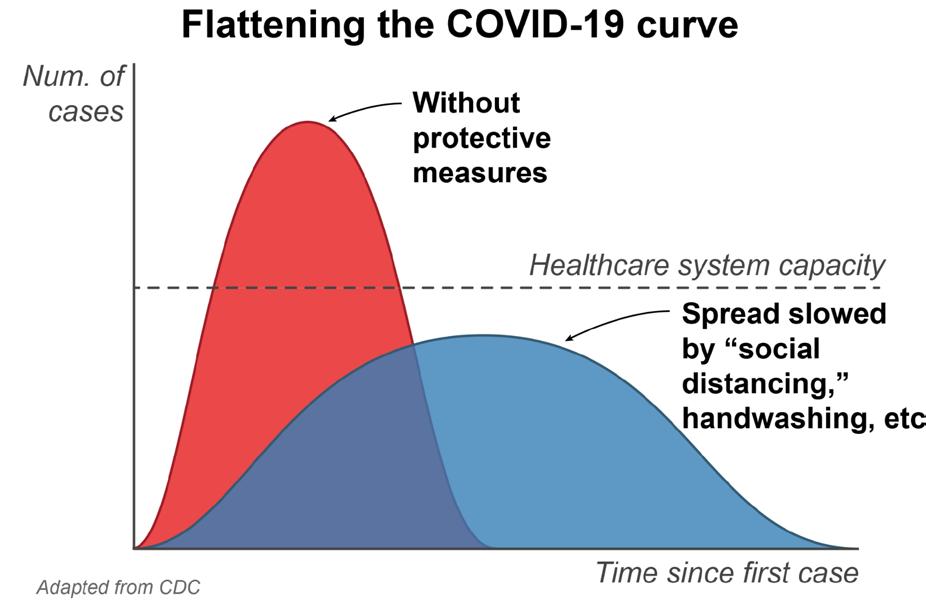
3 minute read
Epidemics/pandemics (A Hjermstad, A Lam, R Lazareto
Definition
Opioid Crisis
Advertisement
Origins and evolution: Opioid addiction can be traced back to 1980 when a letter published by the New England Journal of Medicine glossed over a study conducted by a Boston University professor that tested over 11,000 patients for if they developed an addiction to prescribed opioids in an inpatient setting. The study concluded that an overwhelming majority of those patients did not gain an addiction to the prescribed opioids. This finding is what major pharmaceutical companies like Purdue Pharma used as a catalyst for their aggressive marketing campaigns for opioids such as oxycontin to be pushed out into the market for public consumption.
Intercultural Impact: As we know now, opioids ARE addictive substances have played a large role in increasing mortality rates due to overdose of opiates. The CDC has outlined that more than 230,000 Americans have lost their lives to overdoses involving prescription opioids since 1999.

https://www.cdc.gov/vitalsigns/opioid-overdoses/infographic.html
Opinion: The opioid epidemic is a problem that is currently being treated with a bandaid. It is our responsibility to better regulate the use of illicit and synthetic opioids to lower the overall death-toll the US is experiencing right now -R. Lazareto
COVID-19 (Coronavirus)
Background: Started with a group of patients with pneumonia that had interaction with seafood and live animal marks in Wuhan, China (suggests animal-to-person spread). A positive ressult of the virus was first reported on Dec. 31, 2019, after Li Wenliang, a Chinese ophthalmologist, warned fellow colleagues about a possible outbreak.It spreads like influenza, which is highly transmissible through person-to-person spread via respiratory droplets. Symptoms vary from mild to severe, such as shortness of breath, fever, coughs, pneumonia, and even death. Testing for COVID-19 involves a nasopharyngeal swab. Thus far the only form of treatmeant is supportive care, however tx and vaccines are currently in development. There is some suspicion that Hydroxychloroquine and Azithromycin can cure the virus.
Global impact: Global deaths have passed 40,000 and is affecting 201 countires. Many counties have ordered for lockdowns, shelter-in-Place actions with people adapting remotely. Hospitals are at capacity with limited ICU beds and supplies, such as ventilators and masks. Small business are hitting a financial crisis, which will put countries in a recession in the near future.
Opinion: Some people in the US still do not realize how serious COVID-19 is, and it puts a huge risk on otthers. By practicing social-distancing and taking extra-precautions, will “flatten the curve” of the virus. We do not want to get to a point where physicians will have to choose which patients to save, as resources will become limited. -A. Lam


Malaria Background: Malaria is a parasite that is transmitted from person to person due to infected mosquitoes. The parasite reproduces in a host’s blood causing fever, chilling and pain amongst other symptoms. In the worse cases the disease leads to coma and death. In 2017 it was estimates by the World Health Organization (WHO) that over half a million children passed away from the disease.
Global impact: Over the last century affected regions has decreased and the primarily affected regions sub-Saharan Africa, central/southern America and southeast Asia. To decrease areas affected by malaria, widespread use of insecticides decrease mosquitoes populations and swamp land has been drained to restrict breeding grounds of the disease carrier. Additionally, economic development has allowed for improvements in housing conditions in rural Africa, lowering the diseases ability to spread to new hosts, and more importantly protecting children under the age of 5 from being exposed. https://ourworldindata.org/malaria

Treatment: Antimalarial drugs, such as artemisinin-based combination therapies (ACTs) and chloroquine phosphate
https://www.livescience.com/coronavirus-flatten-the-curve.html
This curve refers to the projected number of people who will contract COVID-19 over a period of time. The faster the infection curve rises, the quicker the local health care system gets overloaded beyond its capacity to treat patients. In contrast, a flatter curve, assumes the same number of people who ultimately get infected, but over a longer period of time. A slower infection rate will allow less stress on the health care system and fewer ill patients being turned away.
References: 2019 Novel Coronavirus (2019-nCoV) Situation Summary. (2020, February 13). Retrieved from https://www.cdc.gov/coro navirus/2019-nCoV/summary.html
Murthy, V. H. (2020, February 12). Ending the Opioid Epidem ic - A Call to Action: NEJM. Retrieved February 17, 2020, from https://www.nejm.org/doi/full/10.1056NEJMp1612578
Novel coronavirus (2019-nCoV). (2020, January 31). Retrieved from https://www.who.int/emergencies/diseases/novel-coronavi rus-2019
Opioid Overdoses Treated in Emergency Departments. Centers for Disease Control and Prevention. https://www.cdc.gov/vital signs/opioid-overdoses/index.html. Published March 16, 2018. Accessed March 28, 2020.










